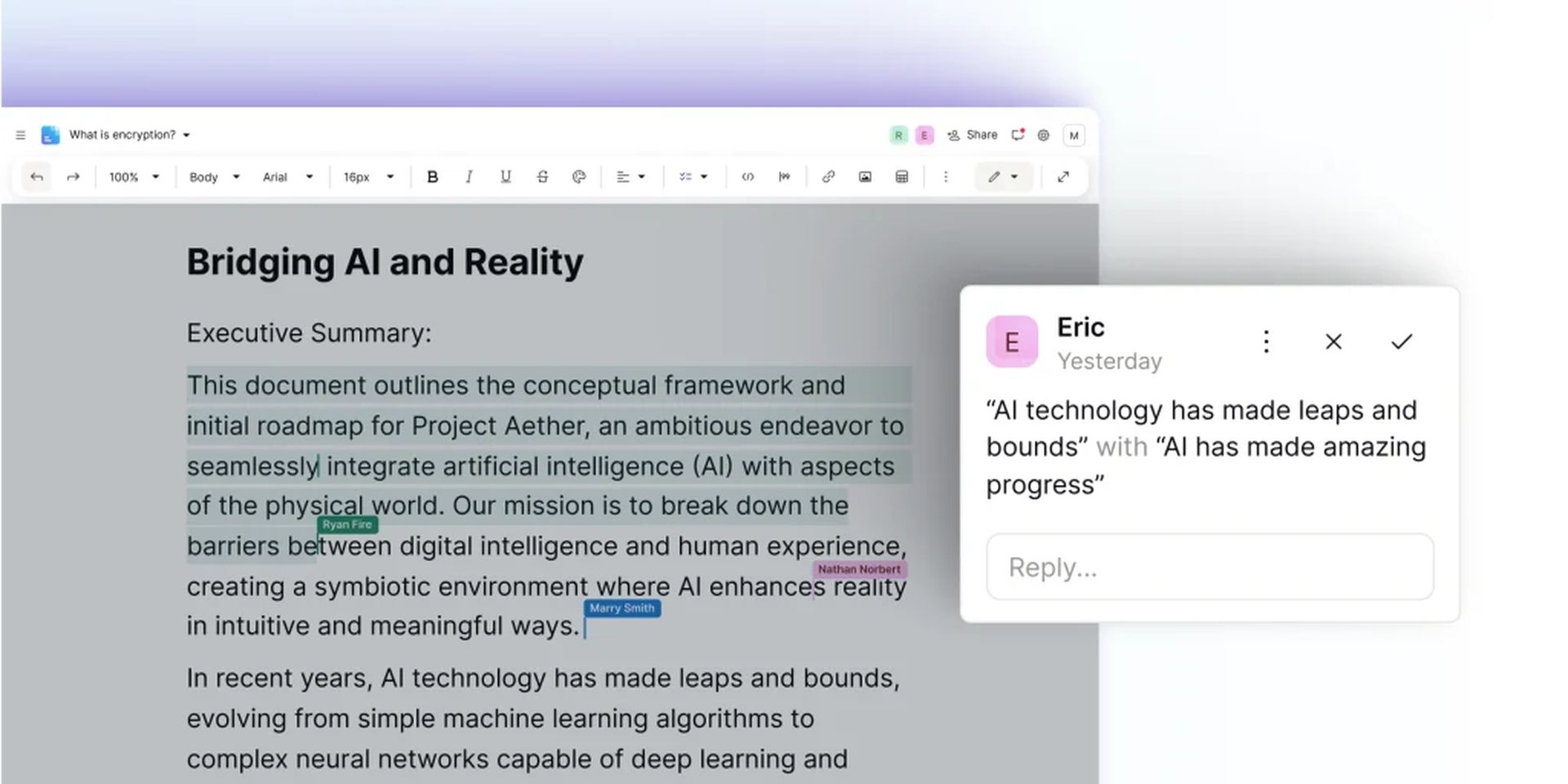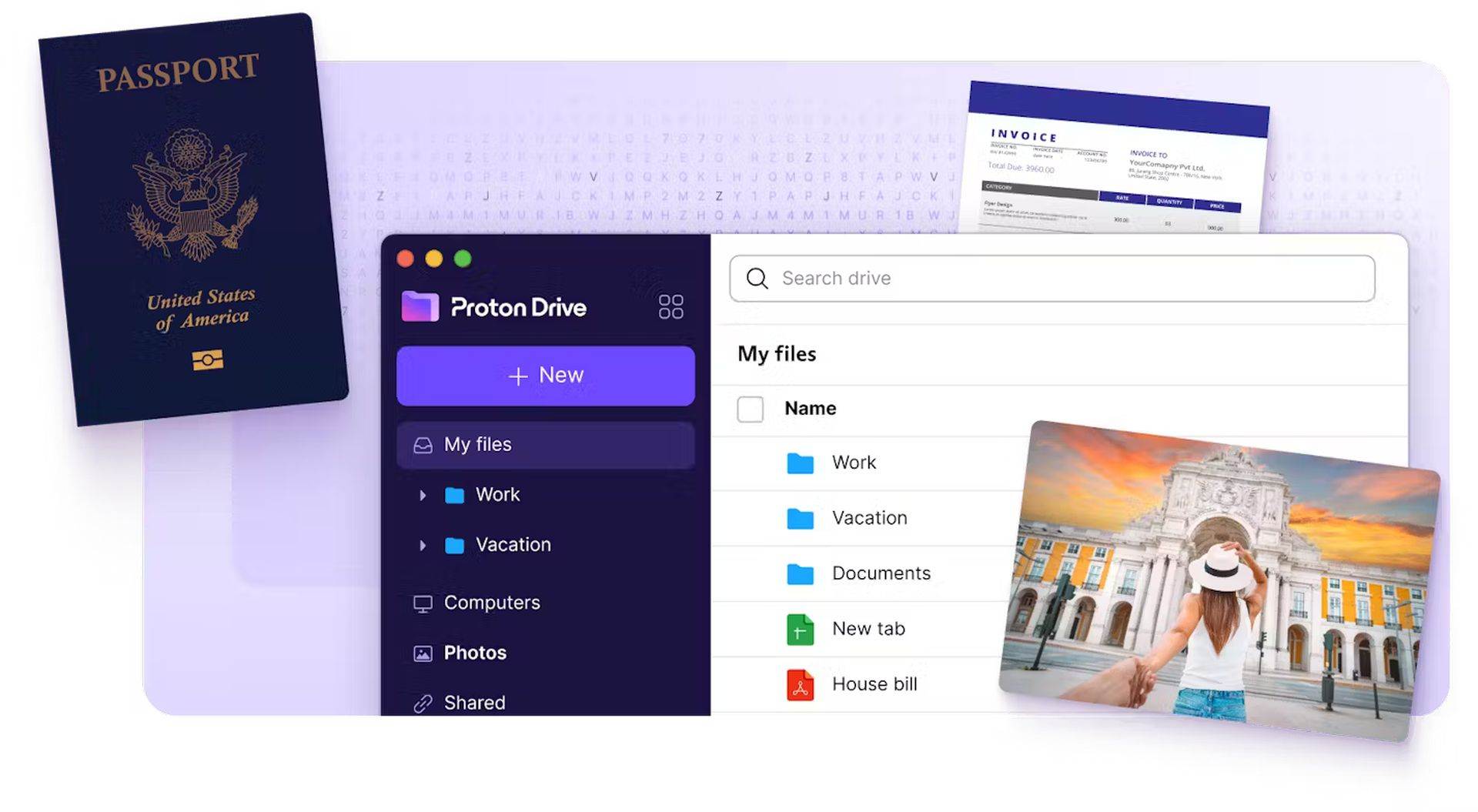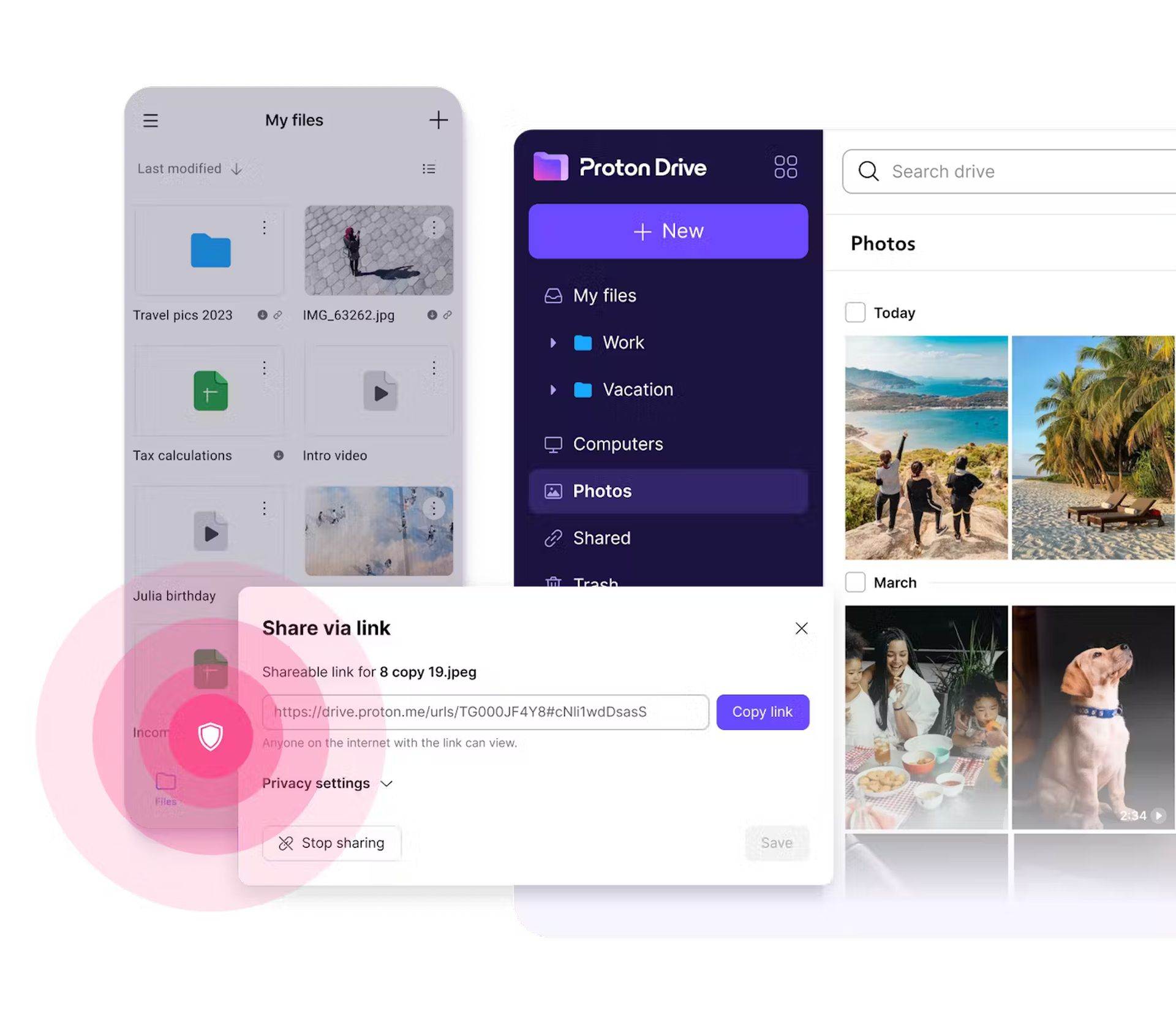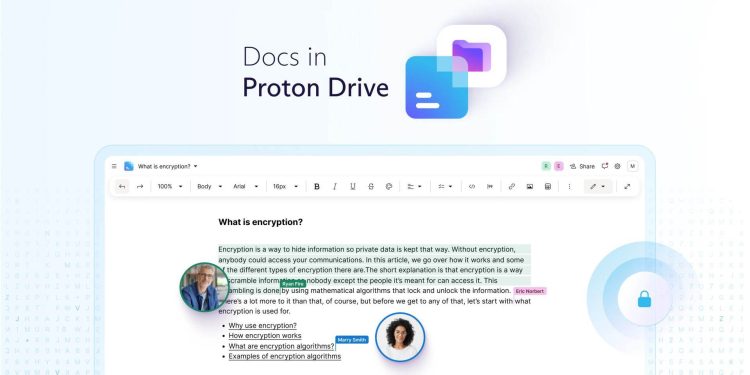Proton Docs has just been launched by Proton as a privacy-focused alternative to Google Docs. This new addition is part of Proton’s growing suite of privacy-centric work tools, aiming to provide users with a secure and private platform for document creation and collaboration. Proton Docs, like its Google counterpart, offers a familiar interface with white pages, a formatting toolbar, and real-time collaborative editing. The significant difference lies in its commitment to privacy and security, which has always been Proton’s core promise.
Proton’s journey began with ProtonMail, an encrypted email service, and over time, the company has expanded its offerings to include a calendar, file storage system, password manager, and more. The introduction of Proton Docs marks a natural progression in Proton’s mission to provide comprehensive, secure alternatives to mainstream productivity tools. This move follows Proton’s acquisition of Standard Notes in April, hinting at its ambition to cover all aspects of office productivity with a focus on privacy.

What sets Proton Docs apart?
The initial release of Proton Docs boasts rich text options, multimedia support, and desktop optimization. Although currently web-only, Proton has plans to expand its availability to other platforms. As with all Proton products, security is paramount. Each document, keystroke, and cursor movement in Proton Docs is end-to-end encrypted in real time, ensuring that user data remains private and secure.
The launch of Proton Docs and the expansion of Proton Drive reflect a broader trend in the tech industry towards privacy-focused alternatives to mainstream services. As concerns about data privacy and security grow, more users are seeking out tools that prioritize their privacy. Proton has positioned itself as a leader in this space, consistently delivering products that offer strong encryption and a commitment to user privacy.
The success of ProtonMail demonstrated the demand for secure communication tools, and Proton has built on this foundation to create a suite of products that cater to various aspects of digital life. By offering alternatives to popular services like Google Docs and Google Drive, Proton is addressing the needs of users who want the convenience and functionality of these tools without compromising their privacy.

Proton’s approach to developing its productivity suite is methodical and user-focused. By acquiring Standard Notes and integrating its features into Proton Docs, Proton has shown its dedication to creating a robust and versatile document editor. The ongoing development and planned platform expansions indicate that Proton is committed to meeting the evolving needs of its users while maintaining its high standards for privacy and security.
Proton Drive could be the secure storage option you were asking for
Proton Drive, another key component of Proton’s suite, provides secure file storage with a focus on privacy. Proton Drive offers a user-friendly interface for storing and sharing files while ensuring that all data is encrypted both in transit and at rest. This ensures that only the user has access to their files, with Proton promising never to sell or misuse user data.
Proton Drive supports various file types and allows for easy organization and management of stored files. Users can create folders, upload documents, photos, videos, and more, with the assurance that their data is protected by robust encryption protocols. This commitment to security makes Proton Drive a compelling choice for users concerned about their digital privacy.
Proton Drive’s integration with Proton Docs further enhances its utility. Users can seamlessly create, edit, and store documents within the secure environment of Proton Drive. This integration highlights Proton’s goal of providing a comprehensive, privacy-focused productivity suite that rivals the offerings of Google and Microsoft. As Proton continues to develop and refine its products, users can expect even more features and improvements aimed at enhancing both security and usability.
How to use Proton Docs
Whether you’re familiar with document editing tools or new to this type of software, using Proton Docs is straightforward. Here’s a step-by-step guide to help you get started with Proton Docs.
Sign up for a Proton account:
- If you don’t already have a Proton account, you’ll need to create one. Visit the ProtonMail website and sign up for an account. This will give you access to all Proton services, including Proton Docs.
- Log In to Proton Drive:
- Proton Docs is integrated within Proton Drive. Once you have a Proton account, log in to Proton Drive. Use your Proton credentials to access the platform.
- Access Proton Docs:
- After logging into Proton Drive, navigate to the Proton Docs section. This can typically be found in the main dashboard or via a specific menu option for creating and managing documents.
Creating and managing documents
- Create a new document:
- To start a new document, click on the “New Document” button. This will open a blank document in the Proton Docs editor.
- Editing your document:
- The Proton Docs editor offers a familiar interface with a toolbar at the top for formatting text. You can:
- Bold, Italicize, and Underline text.
- Change Font Size and Style.
- Insert Links, Images, and Multimedia.
- Create Lists (numbered and bulleted).
- Use the toolbar to format your document as needed.
- The Proton Docs editor offers a familiar interface with a toolbar at the top for formatting text. You can:
- Saving your document:
- Proton Docs automatically saves your work as you type. However, it’s good practice to manually save by clicking on the “Save” button if available.
Collaborating with others
- Sharing documents:
- Proton Docs allows you to share documents with others securely. Click on the “Share” button and enter the email addresses of the people you want to collaborate with. Set their permissions (view or edit) as required.
- Real-time collaboration:
- Collaborators can work on the document simultaneously. You’ll see their cursor movements and edits in real-time, similar to other collaborative document editors.
- Commenting and suggestions:
- Use the commenting feature to leave notes or suggestions for collaborators. This is useful for feedback and collaborative editing.

Organizing and storing documents
- Organize with folders:
- Proton Drive allows you to create folders to organize your documents. Create folders by clicking on the “New Folder” button and drag and drop documents into these folders for better organization.
- Search and sort:
- Use the search bar to find specific documents quickly. You can also sort documents by name, date modified, or other criteria to keep your workspace organized.
Ensuring security and privacy
- End-to-end encryption:
- Proton Docs encrypts every document, keystroke, and cursor movement in real-time. This ensures that your data is protected and only accessible to you and those you share it with.
- Two-factor authentication (2FA):
- For additional security, enable two-factor authentication on your Proton account. This adds an extra layer of protection, requiring a second form of verification when logging in.
- Regular rackups:
- While Proton Docs automatically saves your work, it’s always a good idea to regularly back up important documents. You can download copies of your documents to your local storage for safekeeping.
Accessing Proton Docs on different platforms
- Desktop optimization:
- Proton Docs is currently optimized for desktop use. Access it through your web browser on a PC or Mac for the best experience.
- Future platform expansions:
- Proton plans to expand Proton Docs to other platforms, including mobile. Stay updated with Proton’s announcements for news on app releases and additional platform support.
Proton Docs provides a secure, privacy-focused environment for document creation and collaboration. By following these steps, you can effectively use Proton Docs to create, manage, and share your documents while ensuring your data remains private and secure.
Featured image credit: Proton





